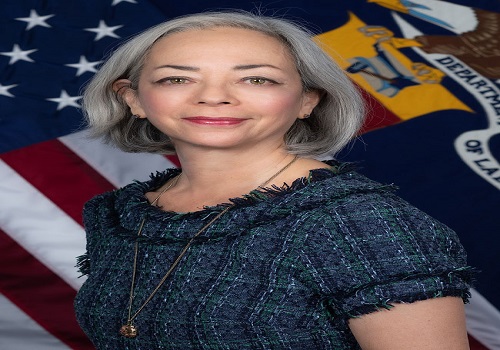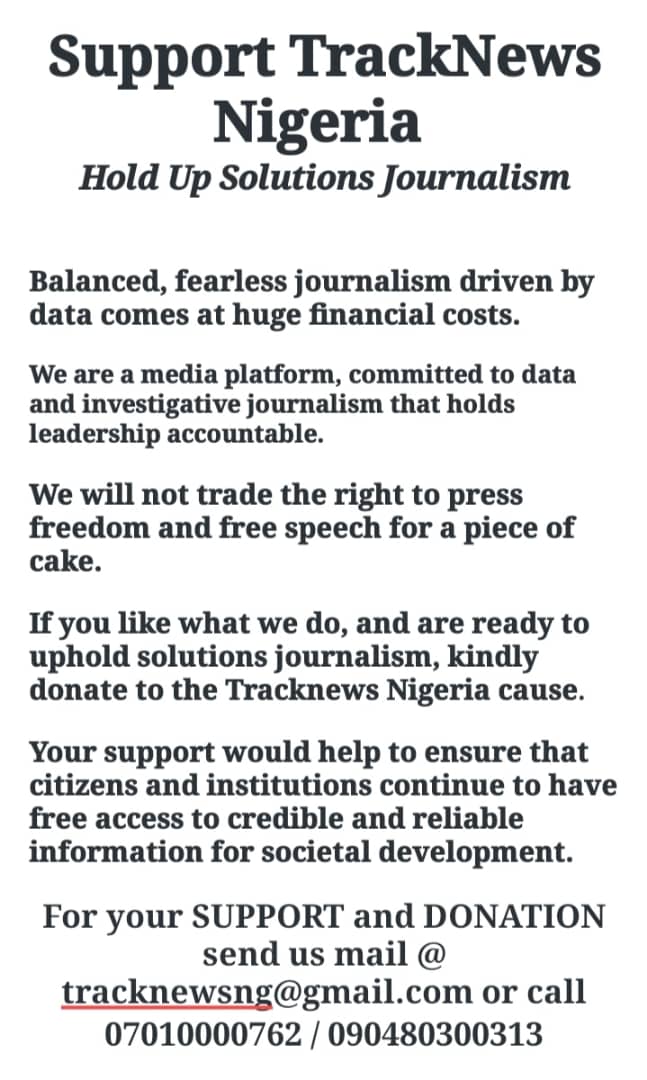National
‘Nigeria needs to get about 10.5 million children in school’

The United States Deputy Under-Secretary of Labour for International Affairs Thea Lee dissected the child labour situation in Nigeria and around the world via an online briefing. Her response to a question by United States Bureau Chief OLUKOREDE YISHAU shows that Nigeria is failing its children by not meeting the international standards in critical areas such as the minimum age for work, prohibition of child trafficking, prohibition of commercial sexual exploitation, prohibition of using children in illicit activities as well as having a high out-of-school rate of approximately 10.5 million children, one of the highest in the world. Excerpts:
Research on Nigeria
We are pleased that the Nigerian government has validated both a national policy of child labour and a national action plan on the elimination of child labour, and the goal is to have a standardised policy and child labour action plan throughout the country. And I think this is an important first step, but unfortunately, there is also a lot of work that still needs to be done.
In terms of international standards, I’m afraid Nigeria does not meet many of the international standards that we report on – the minimum age for work, prohibition of child trafficking, prohibition of commercial sexual exploitation, or prohibition of using children in illicit activities. So, these are very important legal areas where more work needs to be done.
Some of the sectors where we have seen child labour in Nigeria include mining, domestic work, commercial sexual exploitation, and we see that children have been subjected to forced labour in begging, street vending, and domestic work. And in terms of education, which of course is one of the key elements that we say that children need to be in school and not in the workplace, but Nigeria has a high out-of-school rate: approximately 10.5 million children, nearly one in three children in Nigeria, are out of school, and that is one of the highest in the world.
And with respect to law enforcement, which is of course the key element, we did not see enough emphasis, enough resources on labour and criminal law enforcement, including the existing protections that are on the books for children in the informal sector. And one of the things that we talk to many countries about is the ability to conduct unannounced labour inspections. The government has to be able to show up at a workplace without telling them ahead of time; that is a crucial element in a strong labour inspection system. And making sure that labour inspectors have the ability to enact and collect penalties when they find violations. So those are – those are some of the – that’s the picture that we have in Nigeria. So progress with respect to the national action plan, but much more needing to be done in terms of enforcement and legislation.
Child labour statistics
The new figures on global child labour came out recently last year from the International Labour Organisation and UNICEF, and the results were disturbing. We saw that for the first time in two decades, child labour globally is rising, not falling. And so between 2016 and 2020, global – the number of children in child labour globally increased from 152 million to 160 million. And I’ll tell you something, which is that the entire 8 million increase in child labour was in sub-Saharan Africa. And so that is a wake-up call. This is a moment of crisis, a moment of urgency where we really need everybody – we need governments, we need the media, we need unions and business and civil society – to put our heads together and to be able to address this question. And the other thing that makes it more urgent, too, is that those figures are through the beginning of 2020, and we know that COVID has actually made this problem much worse, that it has thrown families into poverty and it has disrupted economies and supply chains, and that has put many more children – especially the most vulnerable populations like migrant workers – at even heightened risk.
So these are the emergencies that we face here, and we know from our work at the U.S. Department of Labor that children workers and adult workers in forced labour are often in the shadows. Many are out of reach of regulations. They work in homes, in mines, or in fields that labour inspectors rarely visit and at the bottom end of global supply chains, far out of sight of the consumers who ultimately purchase their products.
So we need better data to be able to understand the problems and to be able to solve those problems, and that’s what we’re very proud of at the U.S. Labor Department and my little bureau, the International Labor Affairs Bureau, ILAB, that the reporting that we do on child labour and forced labour makes these unseen people visible; it exposes both the governments and the companies that are responsible for labour rights abuses. We provide concrete policy recommendations for governments to enhance both social protection and create the conditions for decent work, which are key factors in combating both child labour and forced labour.
We know, for example, that we are not going to get children out of labor if their parents don’t have good jobs, if they don’t have the right to a union, if they don’t have decent pay, if they don’t have a safe and healthy workplace. So we need to work on these problems together. We need to put all our resources together. And there is not a single silver bullet. There is no one thing. If it were easy, it would be done already.
And the U.S. government, we are using a mix of approaches. We use our research and reporting, but we also use trade enforcement and monitoring. We use technical assistance projects, and we have some very exciting projects going on in the African region, and we use multilateral engagement and labour diplomacy to address these issues. And we know that when we look at global supply chains, being able to track what happens and where goods go through the global supply chain is a critical tool in the fight to end labour exploitation. And this year, our work is – Congress, the U.S. Congress, has asked us to go – to delve deeper. We have always put together lists every two years of goods that are made with child labour and forced labour around the world, but Congress wants us to look deeper to look at goods that are also made with inputs made with forced and child labour. And so that is obviously a very expanded universe of products, but it is also essential to holding both companies and governments accountable. And so we are working to use our trade agreements and new technologies to be able to track inputs made with child labour or forced labour. And, for example, we’re looking at critical supply chains – like cocoa from West Africa; cobalt from the Democratic Republic of the Congo; polysilicon from China, which is a key input into solar panels; and many others.
And one project I wanted to highlight: In West Africa, we have funded some of the sector-specific child labour surveys, which gives us that information, the data that we need to be able to solve the problem, to document the scope and nature of child labour in specific sectors. And we are funding projects to demonstrate to the cocoa industry actors that traceability is, in fact, possible. And at the moment we have two projects – MATE MASIE and CACAO projects – that are piloting farm-to-cooperative traceability systems in Ghana and Cote d’Ivoire, respectively.
So we – the last thing I wanted to mention is a great new initiative that the Biden-Harris administration has launched: the M-POWER Initiative. It’s called the Multilateral Partnership on Organising, Worker Empowerment, and Rights. This is the U.S. Government’s largest commitment ever to securing free, independent, and democratic trade unions on a global scale, and we are coordinating with other governments to make sure that this effort can have the resources and the coordination it needs, and then also with philanthropic organisations. So we have – the U.S. government has committed $124 million over the next two years to strengthen worker voice and worker power around the world. And the philanthropic administration has – philanthropic organisations have thrown in another $100 million. So this is a very significant effort. We’re very proud of it. We’re very excited about it. We’re – one of the reasons that we’re here is to be able to talk to other governments and other international organisations about M-POWER because we want to bring more folks on board.
COVID and U.S. efforts to decrease the percentages of child labour in sub-Saharan Africa
Apparently, we’re not doing enough. So I would just say that as a start, that more needs to be done. I do think that the vaccination support has been helpful, and we hope that there will be more support going forward.
With respect to COVID, hopefully we are at a place where we are beginning to emerge slowly from the pandemic and to be able to make the changes. I mean, one of the key things for us, of course, is as business ramps back up again, we need to make sure that we have taken on board the lessons of COVID, which is to say that worker protections and a safe workplace and the right of workers to organise and to bargain collectively are actually a key part of a safe return to work. And I think we’ve seen that in the United States and we’ve seen it around the world that trying to shortcut, to jump over some of those things – to say, oh, we’re in a crisis, so we need to weaken worker protections or minimum wage or child labour enforcement – that is the wrong way to go. Part of what we need to do is to understand that – well, I think what we saw in COVID is that the most vulnerable worker in society can bring all of us down. If your people who are working in the meat-packing factory do not have protections, that will bring down that factory. If people who are working in retail or in restaurants or in hospitality don’t have sick leave, they don’t have the ability to stay home when they have a cough, that will bring all of us down.
So I am hoping that governments all over – all over the world, and including in Africa – are taking on board those kinds of lessons. And so with respect to child labor, we are focused on the most vulnerable workers, and this is what we see especially – there are definitely migration pressures. We see that here; we see it all over the world; we see it in the United States. And – sorry – when families migrate out of economic desperation, often the children fall out of school or they don’t have access to online school because they don’t have the technology and so on. And so governments need to be especially protective of those people who are in transit, who are vulnerable because of language barriers, ethnic/religious barriers, those kinds of things. And so that’s where we’re trying to focus some of our technical assistance during this period – the sort of COVID and post-COVID period.
Why child labour is still prevalent in the world
I think I would say the simple answer – why does it happen? It happens because somebody is making money off of it. And therefore, we need to make sure that we are not just talking; it’s not just a question of blah, blah, blah or exhortation. Because we need to change the economic conditions around which unscrupulous companies or even governments who don’t care can benefit from violating human rights and children’s rights. And I know at this conference the labour minister from the Bahamas at a session that I was on yesterday said child labour is a form of child abuse. We should treat it that way, that these people are criminals. If you have a company that says, well, children are cheap, children are docile, they’re not likely to form a union, they’re not likely to go out on strike, then that is wrong. It’s wrong.
And in order to protect the good companies – and there are plenty of good companies that have high standards and that really want to be competing on a level playing field – we have to crack down on the bad players. And governments, this is their job. It is the job of governments to make sure that nobody is profiting from exploitation of children because this is a heinous crime. And that’s the kind of commitment that we are seeing this week, and there is a frustration too, there is an impatience that I’m sensing from other people and I have it. I have it myself. I am impatient and frustrated. I don’t want to see another 10 years of pledges and commitments and promises.
We need to take concrete actions, and that is why the U.S. Government under the Biden-Harris administration have what we call the worker-centered trade policy that we – this administration, Secretary Walsh, Ambassador Katherine Tai, who is our U.S. Trade Representative, have made very clear that we want our trade policy to support and strengthen workers’ rights and human rights. We want to – access to the U.S. market is in jeopardy for companies or governments that are violative of child labor, of forced labor, of violations of freedom of association, collective bargaining, and discrimination in employment. These are international labor standards. Countries have committed to uphold those through the International Labor Organization. But we need to use every tool at our disposal, including market access, including criminal prosecution, to make sure that we are not allowing unscrupulous actors to profit and benefit from violating these important protections.
-

 Politics4 days ago
Politics4 days agoPROPHESY TO PRESIDENT BOLA AHMED TINUBU ABOUT 2027
-

 News4 days ago
News4 days agoFamily, Friends Celebrate Jailed Former Deputy Senate President, Ike Ekweremadu’s Birthday
-

 Business2 days ago
Business2 days agoNigeria’s Azikiel Refinery to Begin Operations in 2025
-

 News7 days ago
News7 days agoBaraza Cooperative Disputes Becky Buodeigha’s Claims, Cites Pattern of Dishonesty
-

 Business5 days ago
Business5 days agoBaraza: Bribena pleads for understanding, highlights solutions to organization’s problems
-

 Politics4 days ago
Politics4 days agoFubara Swears-in Dagogo as Attorney-General, to Probe Wike’s 8 Years As Governor
-

 Politics1 day ago
Politics1 day agoYou Have a Few Days to go, Gov. Fubara Tells LGA Chairmen
-

 Business4 days ago
Business4 days agoGunmen kidnap Dangote cement workers in Edo




